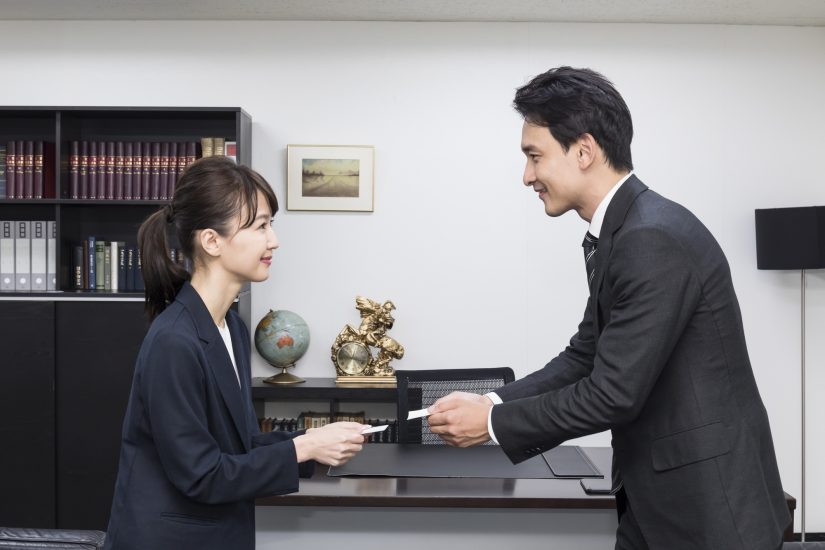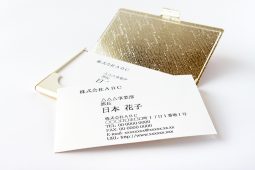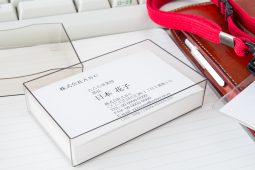The world of Japanese business has its own set of customs, norms and etiquette – some of which are essential to learn in order to get on well with co-workers and bosses, but some of which need only be learned if you work regularly in a context that requires them.
Whatever your work situation is in Japan, understanding why Japanese workers and businesspersons use the most common forms of etiquette will go a long way to accepting them and incorporating them into your own daily working life.
First impressions are important everywhere, and as an Asian country, Japan places much emphasis on non-verbal communication such as pitch, speed, tone and volume of voice, gestures and facial expressions, body posture, stance, and proximity to the listener, eye movements and contact, and dress and appearance. These all transmit meaning aside from the words themselves.
To bow or not to bow – it’s all by degrees
The first thing to do, though, when you interact with people is… relax. Nobody is going to get angry because you accidentally bowed five degrees lower (or higher) than was necessary for the situation. If you are a new arrival in Japan, nobody will expect you to bow at all, let alone get the angle right. You may be the type who likes to shake the hand of everyone you’re introduced to, and that’s okay.
Historically and culturally, handshakes are an expression of friendship, sociability and in the case of business contracts, amical agreement. Bowing, on the other hand, is an expression of respect. The smoother your bow, the better the impression because a well-executed bow is aesthetically pleasing. If you want to bow correctly, then fold your upper body down from the waist in one quick movement and slowly raise it while keeping your head still. No eye contact is made when bowing; the eyes meet before and after, but not during the bow. The most common bow that a new foreign employee will likely use is the 15° slight bow known in Japanese as “eshaku”. This is employed as a greeting to seniors in the same section or group and can also express thanks or an apology for a minor mishap. There are two other bows known as “keirei” and “saikeirei”. The first is a 30° salute used to greet customers or a senior figure from another section; the second is a 45° respectful bow for important customers and the upper echelons of senior management.

Japanese business cards – treat them like gold
In the west, business cards don’t tend to have much significance aside from making it easier for the other party to contact you. In Japan, your meishi business card is your emissary. It lays the ground for smooth communication by revealing your true social status and unless business cards are exchanged, no business can take place. In the west, the higher-ranking person usually offers their hand first, but in Japan the lower-ranked person (e.g. an employee exchanging cards with an important customer) is expected to offer their meishi first.
There is also some important protocol for exchanging business cards. It all relates to non-verbal communication and the fact that your meishi is your body’s paper envoy. If you want to write a note or number on the other person’s business card as a reminder, make sure you wait until they are not present; defacing a Japanese person’s card in front of them is as if you were scribbling on their actual face! During the exchange, you’ll need to keep your business card either lower or at the same height as the other person’s. Depending on who you exchange cards with, you may have to vie with the other party for a few seconds as they try to keep their card lower than yours! In any case, if you treat their card with respect by studying it for a few seconds before putting it carefully into your card case holder, then you won’t cause offence.
Elevator etiquette – who controls the door to freedom?
I have to admit that this is one aspect of Japanese business etiquette that I haven’t worked out yet. Office building elevators are places where you, possibly without realizing it, can encounter your company’s important customers and senior directors or CEOs. In general, people who enter an elevator full of strangers and interrupt others from reaching their floors often tend to take control of its operation. Alternatively, the person nearest the control panel will operate it, and let everyone else file out before they leave themselves. Seniority also plays a role in deciding who controls the door to freedom, but if you want to avoid being everyone’s elevator robot, just look at your mobile phone and shunt yourself to the back – that’s what I do anyway!








